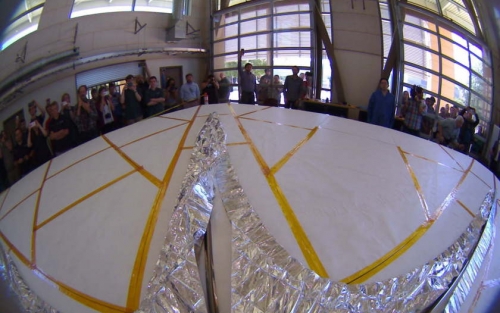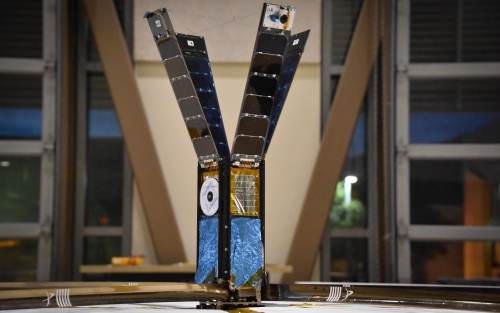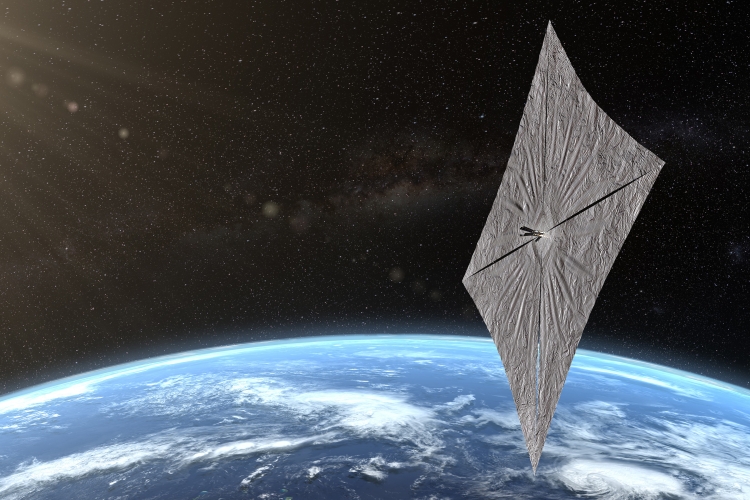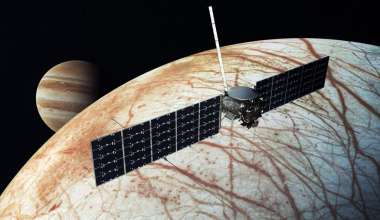Imagine a spacecraft soaring through the solar system at speeds surpassing 2,000 meters per second, propelled by a sail filled, not with wind, but sunlight.
It’s an idea that stretches back centuries. The possibility that the energy of the Sun could one day be used to traverse space was first credited to 17th-century German astronomer Johannes Kepler after he witnessed the passing of what was later-identified as Halley’s Comet.
Several hundred years later, engineers are using that insight in the design of solar sails that use reflective materials to harness photons from the Sun to carry a spacecraft deep into the cosmos. A number of organizations, both public and private, are developing and testing solar sails in pursuit of a propulsion system that doesn’t rely on carrying its own propellant into space with it.
The most recent example of this burgeoning technology is The Planetary Society’s Light Sail 2, a CubeSat-based system featuring a massive solar sail and equipped with two cameras designed by The Aerospace Corporation launch as part of the payload on SpaceX’s Space Test Program-2 mission on June 24.
The Aerospace camera, which was also a part of the 2015 Light Sail 1 mission, plays a critical role of capturing images during the deployment of the solar sail. It’s information that’s especially useful should something go awry, providing context and data to engineers looking to troubleshoot any issues.
The 2MPC is a two mega-pixel camera with fish-eyed lenses built with off-the-shelf sensors. That might not sound like much — its resolution paling in comparison to today’s modern smartphones — but it’s the packaging that makes it the right fit for the job. The casing design allows it to operate while exposed to the extremes of space on all sides. The cameras are designed and built by Aerospace employees, growing out of earlier efforts to find an imaging solution capable of fitting on a CubeSat.
“What makes the camera unique for The Planetary Society was they hung it out on the end of a solar wing where there was nothing but space on 360 degrees, basically,” said David Hinkley, project leader at the small satellite department at Aerospace’s xLab. “It had to survive in a thermal environment where it was just going to get overheated from the Sun or too cool from space. It can just sit out there in space on a finger and be happy."
The Light Sail 2 mission is being conducted by The Planetary Society, a private, non-profit organization founded in 1980. One of the group’s co-founders, the late astronomer Carl Sagan, is credited with helping introduce the concept of the solar sail to the broader public, including during a 1976 appearance on The Tonight Show where he showed a model of a sail to host Johnny Carson.

Light Sail 2’s four triangular Mylar sails are deployed using four cobalt alloy booms, forming a square that covers a total area of 32 square meters — about the size of a boxing ring. Light from the Sun — in the form of photons — strikes the sail, transferring small amounts of momentum to provide a small but constant source of acceleration.
Two Aerospace cameras, equipped with heaters to combat the cold of space, are mounted on the tips of the spacecraft’s solar panels.
“There is a thermostat that turns on at 0° C and turns off at 3° C. Having this thermostat-integrated circuit relieves either the flight computer on the satellite or the camera processor from having to run a loop that monitors the temperature and decide when to allow power to the heaters,” Hinkley said.
From there, they’ll take up to 64 images total of the sail deployment at a rate of up to one image every seven seconds. The images are copied to the spacecraft’s flight software and then downloaded by ground controllers.
The goal, according to The Planetary Society, is to harness enough thrust from the Sun to raise the satellite’s orbit by a measurable amount over the course of a month and demonstrate solar sails as a workable propulsion method for CubeSats.
As a new generation of small satellites continues to redefine what kinds of space missions are possible, it’s also forcing scientists and engineers to reconsider fundamental aspects of space travel to get the most out of these small packages. In fact, the Aerospace-designed camera is already planned to play a role in future missions, including work being done by NASA on its own solar sail designs.

“We know because of the way the camera is designed, it's going to be robust in the space environment. There are a lot of cameras out there, small cameras you can buy off the shelf. But they have no thought in their design as to putting them into space,” said Dr. John Carr, engineer at NASA Marshall Space Flight Center.
Carr is leading a team that’s working to embed thin-film solar cells into the lining of the space sail itself in order to provide light-weight but high-performing power generation for small satellites. A mission involving the technology, known as the Lightweight Integrated Solar Array and Transceiver or LISA-T, is expected to take place early next decade.
“You're seeing us start to grow the CubeSats platform to do big science in small packages,” Carr said.









